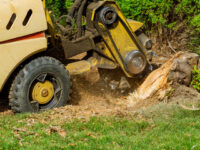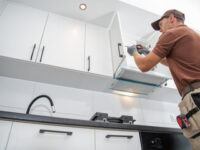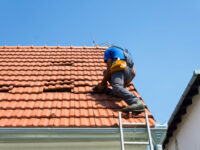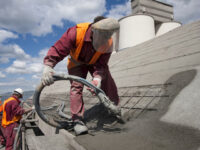The Basics of Roofing Maintenance
Roofing company perform surface maintenance to protect the integrity of your roof. This can include ensuring that gutters are clear for drainage, repairing cracked pipe boots, and more.
Falling branches are one of the biggest sources of potential damage to most homeowners’ roofs. Heavy branches can break through even the toughest roof coverings. They can also create barriers during a storm that lead to water buildup and leaks.
The shingles on your roof protect it from the elements, and they also add to its beauty. They look particularly good on Nantucket-style cottages and coastal homes, but they can be used on any style of house.
Wooden shingles and shakes are built to last, and they can be painted or stained to match your home’s aesthetic. They’re also a great choice if you have children or pets that spend a lot of time outdoors because they are resistant to rot and mold.
When it comes to shingle repair, the more you catch problems before they start, the less likely you are to need major roof work later on. Even a single missing shingle might not seem like a big deal, but it creates an opening for water and wind to cause damage. If you spot a problem, it should be repaired immediately.
Another thing to check during your shingle inspection is the condition of the attic vents. If these are clogged with debris, moisture will be allowed to enter the attic and damage the shingles and other parts of the roof. It’s a good idea to have these cleaned out regularly, at least once every other year.
You should also inspect the valleys, where two roof faces meet. This is a common source of leakage and should be checked for cracks and gaps in the shingle lining. If you have an older roof without valley metal, these areas might need to be reinforced.
Checking for leaks and other issues should always be done on a sunny day, when the sun can help you see what’s going on. Also, be sure to wear comfortable footwear and a dust mask when accessing your roof, as there could be dangerous toxins that can get into your home and be breathed in by you and your family.
Flashing
If you are not familiar with flashing, the roofing professionals working on your roof may seem to be speaking a foreign language when they refer to it. They will be referring to the thin sheet of metal that is installed around penetrations and intersections in your roof’s surface, like chimneys, dormer windows, skylights, and more. Flashing helps prevent water from seeping into these vulnerable areas and potentially causing damage within your home or building.
There are several types of flashing, each performing a different task. Most commonly, your professional will use metal, such as copper, aluminum, or galvanized steel, but flashings can also be made of lead, PVC, or even plastic. Flashing can be either exposed or concealed, depending on where it is used. Exposed flashing is usually a sheet of metal, while embedded flashing is often a non-metal material. Most residential roofing contractors will use metal flashing, but some will also use flexible flashing in places that are more prone to leaks.
The most important job of flashing is to prevent water from penetrating into these critical areas where your roof meets the walls of your house, or building or other structures, such as chimneys. Chimneys require two pieces of flashing, base flashing and counter flashing, to ensure that rain meets a surface that will direct it downward rather than into the chimney or the wall of your home.
Another area of a roof that requires special attention is the valleys where two sloping sections meet. Roof valleys are particularly susceptible to water damage since they are where the shingles meet the roof structure and the wall of your house or building. Professional roofers will typically install a continuous piece of flashing in the valleys of your roof to prevent water from seeping into these areas and causing damage.
Gutters
Gutters are half-tubes of aluminum that hang on the edge of your roof and send rainwater down a drain. They seem simple enough, but there’s a lot more to them than meets the eye.
Gutter installation is one of the most important things that you can do for your roofing system. If you have the right gutters and they are installed properly, it can prevent a lot of expensive water damage. If you have a poorly designed gutter system, it can cause costly problems like mold or mildew on siding or trim, flooding in basements, rotten foundations, and landscaping erosion.
Gutter maintenance involves cleaning out the gutters and downspouts on a regular basis to remove leaves, debris, and other items that can clog them. It also includes inspecting the gutters for structural damage and identifying leaks. A good maintenance plan for your gutters should include inspections at least twice a year, in the spring and fall.
The main function of a gutter is to direct rainwater away from the foundation and walls of your home. This will prevent soil erosion, flooding in basements, and muddy landscaping areas. Gutters can also help you avoid costly repairs to siding, fascia boards, and paint caused by ponded water.
Another advantage of maintaining your gutters is that it can keep pests and insects at bay. Mosquitoes, ants, and termites are all attracted to damp areas, such as those around your home. If you don’t have gutters, these bugs can invade your home through the cracks and crevices. Gutters can prevent these insects from getting into your home by directing water and precipitation away from the foundation and landscaping areas.
Decking
The roof deck is a layer that’s found between the support structures of your roof and the shingles. It’s a necessary part of your roofing system and needs to be strong and sturdy in order for shingles to lay well. If your roof decking is rotting through, you’ll need to have it replaced rather than just repaired. This is because repairing only a section of rotted decking will leave the rest of it vulnerable and in need of repair as well.
When a roof deck is built, it’s often made from wood or composite materials like PVC. The deck is then covered with a roof membrane to protect the structure from the elements. It’s best to use a professional for deck installation, as they have the experience and tools necessary to ensure that it will last for years to come.
There are many different types of decking materials available, so it’s important to choose the right one for your home. Wood decking is the most common choice, but it’s also possible to use composite or even PVC decking if you prefer. Each option has its own benefits and drawbacks, so it’s best to discuss these with a roofing contractor to see which one is the best fit for your property.
If your roof deck is not properly ventilated, you may find that it begins to rot or become soft over time. This can lead to mold, mildew, and fungus, all of which are detrimental to your roof system. Make sure that you talk to a roofing contractor about the proper ventilation for your home’s attic to keep your decking healthy and long-lasting.
Vents
Roof vents are an important part of a home’s roofing system. They help to keep your attic well ventilated, which extends the life of shingles and reduces energy bills. Without proper ventilation, heat and moisture can build up under your roof and cause mold, mildew, and other costly problems.
A well-functioning roof ventilation system includes both intake and exhaust vents. Intake vents are installed in the soffits (the underside of the eaves) to allow cool air into the attic, while exhaust vents are located along your roof’s ridgeline to push heated air back outside. Most roofing experts recommend using a combination of different types of vents for the best results, including soffit vents, box vents, and turbine vents.
Many homeowners may not notice the vents in their attic, but they play an essential role. If the vents are clogged, it could lead to problems with the rest of your house’s plumbing and even carbon monoxide poisoning. If you have a clogged vent pipe, it is recommended that you call a plumber with experience in vent cleaning to remedy the problem.
Turbine vents (or whirlybird vents) are the round knobs you see poking up from residential rooftops. They look simple, but they are vitally important for a home’s ventilation. These vents work with the wind to pull in air and expel hot, moist air. They can be a good choice for areas with frequent storms since they are designed to stand up to strong winds.
While it may seem odd that your roof would need to be vented, improperly functioning roofing can contribute to ice dams and other problems. A re-roofing project is the ideal time to reassess the ventilation in your attic so that it is working properly.






